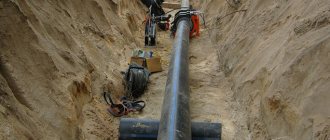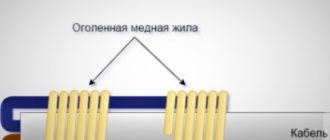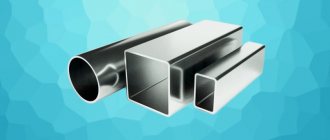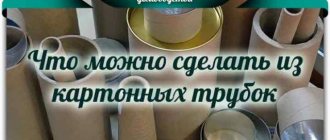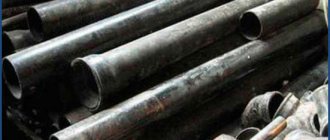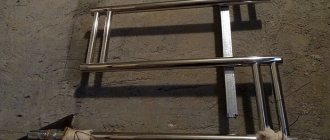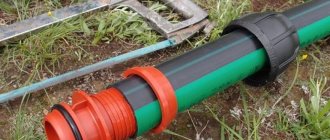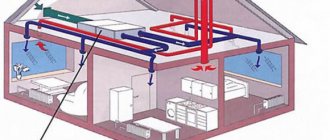When it comes to landscaping private plots, the first thing that is taken care of is the construction of a fence. It is considered an integral part of the improvement of the site and performs decorative, protective and separating functions. Durability depends directly on the material from which the supporting frame is built. Structures of this kind are made of different materials, but metal pipes should be highlighted. When building fences, metal fence pipe is the most popular material. Used as both a fundamental and an auxiliary element. It has a number of undoubted advantages, such as long service life and high strength.
Calculation of the number of pipes
In order to start building a fence, you must first calculate the number of pipes
You can calculate the quantity required for installation as follows: divide the total length of the border by the distance between the supports. It is recommended that the distance separating the support pillars be:
- 2-2.5 meters – for round pipes
- 2-3 meters – for profile ones.
It is important to remember that if the weight of the structures increases, the distance between the supports should decrease. The distance also varies depending on the quality of the soil: the frequency of pillars increases with its softness.
How to choose the right intake pipes depending on technical parameters
The performance properties of the fence are determined by the quality and characteristics of the supporting structure. Therefore, in order for the fence to be of high quality and reliable, you should familiarize yourself with its technical parameters.
Section diameter
In order for the future fence to be strong and durable, you need to take a responsible approach to choosing the cross-section of the support posts. This indicator varies from 2 to 15 cm. The thicker the product, the stronger the load it can withstand.
If you choose an insufficient diameter, the fence may collapse under the influence of heavy winds or other negative factors.
For a forged metal fence, a support with a diameter of 5 cm or more is suitable, which performs direct functions and responsibilities.
The upper parts of the pipes are welded with metal to insulate them from snow and water. If you miss this requirement, in winter the frozen liquid will negatively affect the structure and lead to its cracking.
Material
Fence posts are made from different materials. Galvanized models are securely fixed in the soil and are superior to steel or stainless steel products in terms of wind resistance. In addition, they look aesthetically pleasing and do not require additional decoration.
You can get by with simple metal pipes without spraying, but they need annual painting to protect them from corrosion and damage.
It should be borne in mind that galvanized structures are quite expensive. But this is justified by their service life and external advantages.
Pillar height
The height parameters of the supports are determined by the following characteristics:
- Soil structure. For areas located on sand or loose soil, the height of the pillar is increased by 10-15 cm. This is due to the inability of the soil to fix a short pillar in a stationary state.
- Dimensions of the enclosing structure.
- Specific gravity of the fence.
The length of the products affects such a property as the degree of windage, i.e. on the resistance of supports to strong wind gusts and hurricanes.
Numerous calculators can be found in the public domain that allow you to correctly calculate the parameters of a fence post based on the listed criteria.
Distance between pillars
The distance between the supports determines the choice of pipes. The standard parameters look like this:
- For round pipes - 2.2.5 m.
- For rectangular and square structures - 2-3 m.
In addition to the geometric shape, the type of fence is taken into account. The distance changes in inverse proportion, since the more massive and larger the system, the smaller the distance between the pillars should be. For a fence made of corrugated sheets or chain-link, a distance of 3 m is used.
But a forged steel panel is fixed on poles with a distance of 2-2.8 m. A fence made of corrugated sheets does not need reinforced support, since it does not have much weight.
Having chosen the optimal distance and other characteristics of the pillars, you can proceed to calculating the amount of materials required.
Number of support pipes
To estimate the number of parts for installing a fence, you should apply a simple formula: the length of the perimeter is divided by the distance between the supports. It is important to make sure that the distance is identical in all areas.
Types and materials
Due to certain safety margins, the pipe for the fence posts is chosen from metal. Such structures can be figuratively divided into the following types:
- Sectional fencing - consists of several sections manufactured in factories. The construction of such a structure involves hanging the partition from a profile pipe.
- Welded fences. To obtain them, a frame from a profile is welded with fastening of decorative elements.
When building fences from pipes, additional materials are also used:
- Profiled sheet. A popular combination, it is easy and quick to install, because sheets are ideally connected to profile structures.
- Tree. Typically, wood is used to decorate frames.
- Metal grid. Used for the construction of simple and practical fencing. Most often, these types of structures are prefabricated, because manufactured in factories.
- Forged Products. Forging is often used to decorate metal intake pipes.
Profiled sheet Wood Metal mesh Forged products
Features of installing a fence frame
Having decided which pipes are best to use for the fence and making a sketch of the connecting points, you can begin installation. At the same time, you need to remember that the main enemies of a solid metal fence are wind and soil. Therefore, it is best to embed post-pipes in monolithic concrete, even in the most economical “pitting” method.
Simply driving or screwing pipes into the ground for a high fence is not the best option. Unstable soil gets wet, dries out, and freezes. As a result, the fence frame may become warped or tilted. A concrete “anchor” will prevent the fence of the site from losing stability or changing its geometric shape.
The profile pipe used for the racks must be turned with its wide side perpendicular to the cladding. This will maximize the rigidity of the posts in relation to the wind, which tends to bend the wide “sail” of the fence.
Fastening the corrugated sheet with bolts to the 40x20 profile pipe
Unlike a continuous fence made of corrugated sheets, installing a frame made of pipes for a fence made of steel mesh chain-link is less responsible. This design is not afraid of even hurricane winds, because the mesh does not create much aerodynamic resistance.
The main task here is to ensure the stability of the base, therefore sufficient penetration into the ground and concreting of the pillars are mandatory conditions for the stability of the entire structure.
How to choose
As mentioned earlier, a fence is an integral part of most buildings, for example, for a summer house. The use of metal pipes for fences is an ideal solution: they combine lightness and ease of installation, have a fairly low weight and are highly resistant to weather conditions.
When installing fences, you need to be responsible and conscientious about the selection of pipes. This saves both time and money, and avoids the need for frequent fence repairs.
For guidance when choosing, a very important parameter is the size of the profile pipes. In addition, there are other equally important properties:
- Cross-sectional area. As the area increases, the resistance of the pipe in the foundation increases. Conversely, if there is a deficiency in the value of this indicator, there is a high probability that the fence will fall in whole or in part.
- Steel grade. The choice of steel depends on the desires and financial capabilities of the buyer. You can make a choice in favor of galvanized pipes, which are corrosion-resistant and have a long service life, or you can limit it to products made of black steel, which will require more careful care.
- Pipe length. At the calculation stage, in addition to the outer height, it is necessary to take into account the depth of burial in the ground, and they are placed deep enough, 0.5-1.5 m. A very important point here is windage; the durability of the supports with the cladding must withstand wind gusts.
Section selection
The round section of the fence pipe is stronger than the rectangular one
The most advantageous cross-section, from a scientific point of view, is round. Guarantees maximum strength with minimal use of material, in other words, it saves money. In addition, a pipe with a round cross-section is more convenient to install in soft soil.
The profile section of the pipe for the fence is more technologically advanced than the round one
In terms of ease of assembly, round pipes are inferior to profile ones, because rectangular ones are more convenient to cut and join by welding. Thanks to the flat contact surface, the components of the fence are fixed more rigidly and densely than with a round fence.
The strength of the material of the supporting pillars is determined by the loads that are placed on them: the greater the load, the more the cross-section of the pillar increases. The preference in the thickness of products depends on this.
Approximate prices for pipes of different sizes
The range of pipes is quite large, and before building a fence it is advisable to study market prices. Thanks to this, you can calculate the cost in advance and plan your budget in advance. First of all, you need to decide which pipes will be used and how many will be needed. It is more convenient to calculate the price per linear meter of the product. It is easy to calculate the cost of professional pipes by determining their total footage.
Rectangular pipes with a cross-section of 40x60 mm and a thickness of 2 mm are sold for 110-120 rubles/rm. For more durable fences, posts with a cross section of 80x80 millimeters, where the walls are 3 mm, are useful. Their price ranges from 260 to 290 rubles per linear meter.
The price of a square profile pipe with sides of 100x100 mm and walls of 3 mm is calculated from 360 rubles/rm.
Pipes with a small cross-section, measuring 40x40x2 mm, cost approximately 66-74 rubles, and poles with a profile of 60x30x2.5 mm cost approximately 95 rubles.
Criteria for choosing metal posts for corrugated fences
Fencing made of corrugated sheets with concrete pillars
Any private area needs to be fenced. It is necessary to achieve two main goals - to give the site beauty and protect it from intruders. In addition, the fence helps to get rid of the curious glances of passersby. There is a huge amount of materials for installing fencing on the construction market. One of them is corrugated sheeting.
Advantages of corrugated sheet fencing
Fences made of corrugated sheets are a structure without gaps. A strong metal sheet can withstand heavy loads. Even the strongest gusts of wind will not be able to destroy such a structure. Of course, provided that it is installed correctly.
Another advantage of corrugated board fencing is the ability to choose the height yourself. The assortment includes a huge selection of sheets of different sizes and colors. Thanks to this, you can create a unique design and make your fence special.
Fences made of corrugated sheets are easy to install. Two people are quite capable of doing this job without turning to anyone else for help. If the fence is damaged, you can quickly and easily remove the damaged sheet and put a new one in its place.
The service life of fences can reach 50 years. This depends on the quality of the sheets and how competently the installation work was carried out.
Types of racks for fencing structures
Round metal posts for corrugated fencing
Corrugated fence posts can be brick, stone, wood or metal. Wooden products are rarely used because their service life is the shortest. In addition, they need constant care. If a special substance that protects the tree from negative influences is not applied to them in a timely manner, they will soon become unusable. But even after applying a protective agent, there is no guarantee that the service life will actually increase.
Brick or stone fence posts made from corrugated board are considered elite. From here it is easy to identify their main drawback - high cost. Not everyone will agree to spend the amount of money that brick manufacturers ask for on purchasing materials for making a fence.
If there is enough money, they will decorate any area. In addition to their good appearance, such poles are characterized by good durability, clearly better than the wooden version.
The most common are racks made of metal pipes. They gained their popularity due to their relatively low price, ease of installation, strength and reliability during operation. And if you carry out the correct protective treatment and carry out preventive work in a timely manner, then the resource of such pillars will be almost unlimited.
Advantages of metal pipes
Installed posts for a corrugated fence
The cross-section of a metal pipe can be round (of different diameters), rectangular or square. You can purchase either a new pipe or a used one. Its strength will be quite sufficient for a support pillar. There are also pipes on sale that are intended exclusively for the manufacture of fences and are ready for installation.
The advantages of metal posts for fences made of corrugated sheets include:
- their high strength,
- long service life,
- quick and easy installation,
- unpretentiousness to care and post-installation maintenance,
- large selection of products,
- relatively low price.
Pipes made of metal have almost no disadvantages. And this can also be considered a kind of advantage. The only thing you need to take care of when installing such a pole is reducing the risk of rusting. To do this, it is better to galvanize the product.
How to properly install fence pipes
There are 4 options for installing pipes, you can choose any
Having decided on the pipes for the fence, you need to make a sketch of the connecting points and only then proceed with installation. Installing a metal fence is a fairly simple task, which mainly requires welding skills and the ability to handle metalwork tools.
Installation begins with the installation of racks, but before that the area for the fence is cleaned, leveled, and markings are made.
The pillars are assembled using the following methods:
- Driving into the ground. The support is buried into the ground by blows of a sledgehammer to 1/3 of its length. This method is applicable for low-stony soils.
- Backfilling and compaction. The post is placed in the excavated cavity and secured with a backfill of gravel and sand.
- Partial concreting. The lower part of the base is poured with concrete, and the rest is filled with earth and then compacted.
- Complete pouring of concrete. For supports, shafts of the required depth are dug, the bottom of which is covered with a mixture of sand and crushed stone for drainage. Then pillars are installed in them and filled with concrete.
Important note: the last method is considered the most reliable, because... it is he who guarantees the best fixation. The rest, due to soil instability, may be ineffective and lead to deformation of the entire structure.
Logs and their installation
The logs that secure the corrugated sheets are installed using the following techniques:
- Overlapping. The logs are laid on poles and fixed by welding or self-tapping screws.
- Butt. The guides are attached to the posts by T-welding.
- In the slot. Holes are made in the vertical base at the top and bottom through which the guides will pass. They are also attached by welding.
After installing the frame, they begin the decorative coating. The methods of its fastening depend on the cladding material used. So, the corrugated sheet is attached simply by screwing in special self-tapping screws with sealing rubber bands on the heads.
Section selection
The cross-section of the pillar affects the strength of the material and the level of loads it can withstand. The parameter also affects the thickness and shape of the product. Thus, corrugated pipes are more prone to heavy loads due to the stiffeners.
A round pipe is easier to install in the ground - no foundation pouring is required. Provides maximum rigidity, but is inferior in installation costs. Profile posts and purlins are cut and welded faster using welding - just like a constructor. The flat surface allows for tight contact, thereby achieving reliable fixation. The length of the sections is easily adjusted.
Useful Reinforced concrete fence posts
Thus, when choosing a section, you should start from the purpose of the fence and the main material. Round pipes are suitable for mesh fencing, while corrugated pipes are more convenient and faster to install heavier structures.
Installation Guidelines
A very important fact when constructing a fence is the calculation of the location, because There are certain regulations that need to be followed. We are talking about SNiP - a document in which all norms and distances from buildings are recorded.
The fence should be located at a distance from the neighbors' land plot:
- Three meters from a residential building;
- Four meters from buildings with pets;
- One meter from any other type of building;
- Two meters from low trees, four meters from tall trees and 1 m from bushes.
In addition, the height of the fence should be no more than 1.8 meters and the distance from the underground gas pipe should be at least 1 m. You can obtain documents that set out the standards from representatives of local authorities. To avoid having to resort to demolishing the fence in the future, its construction can begin only after all installation issues have been agreed upon.
How to protect a product from corrosion
If anti-corrosion protection is not provided when installing the fence, the structure will become vulnerable to negative factors and will quickly lose its attractive appearance. Therefore, rust protection is an important step in the construction of pipe fencing.
Work begins with preparing the surface for the application of coloring compounds. This step is paramount as it affects the ease and efficiency of paint installation. At the preparatory stage, the coating should be cleaned of rust, oil compounds, grease and paint. In this case, it is necessary to adhere to radical and conservative methods.
The first involves removing rust with a scraper, a metal brush or a special knife. A blowtorch or acetylene torch gives good results.
Next, builders apply a primer that provides anti-corrosion protection and ensures good adhesion of the paint to the painted coating. For ferrous metals, specialized primers are selected, and for non-ferrous metals, adhesive primers are selected, since they are not subject to corrosive processes. The soil solution is distributed with a brush, sprayer or roller.
Having completed priming, you should proceed to final painting. Paintwork materials are applied with the same tools as the primer.
At the same time, experts recommend doing this in 2-3 layers, maintaining intervals for listening. In this case, you will receive uniform coloring without defects. For convenient distribution of paint, it is customary to use a sprayer, holding it at a distance of 15-20 cm from the surface.
In addition to paint and varnish materials, anti-corrosion protection is provided by installing special tops. Such decorative details perform two functions: they decorate the fence and protect it from liquid penetration into the internal voids.
In addition, people often choose pipes with a welded end that is installed into the soil. Such actions are aimed at increasing the resistance of the material to corrosion processes when interacting with moisture. If you choose an unprotected pole, you will need to organize rust protection yourself by applying primer or paint. The main thing is to do the treatment in 2 layers.
Advantages of a metal profile pipe when constructing a fence
Profile metal pipes will last for decades, unlike wooden ones.
The long service life of the fence structure depends directly on the material from which the supporting frame is made. It is unlikely that a fence with a wooden frame will last more than 10 years. There is a more reliable option - concrete, but when installing such structures, difficulties arise in attaching the purlins.
Based on this, we can conclude that metal profile pipes are the best foundation for a fence. They are distinguished by their durability, strength and manufacturability during installation. Any fencing material can be easily attached to such a frame. Developers chasing budget options are frightened by the high price. But, if you compare the service life of a fence made of wood and metal, you can easily convince anyone of the opposite.
A metal frame will last at least 50 years, when a wooden analogue will require replacement 3-4 times. This is a strong argument in favor of a metal pipe.
A profile pipe is a material that has only one drawback - it must be protected from corrosion. But it is easy to deal with; to do this, before lining the pipe, you need to prime it and paint it with compounds that protect it from aggressive climatic influences.
Benefits of use
When arranging a fence, it is important to know which pipes are better: profile or round. All aspects should be taken into account. Round products have greater resistance to mechanical load. Their cross-sectional shape provides the supports with maximum rigidity even with a small material thickness.
But profile pipes are much more convenient to install than their round counterparts. They have a flat surface, which makes them easier to cut, join, and fix.
You can find out how to choose the dimensions of the profiled sheet here...
Profiled pipes used to construct the frame of fences made of corrugated sheets have the following advantages:
- high strength;
- long service life;
- speed, ease of installation;
- unpretentiousness in care;
- an extensive product range (they come in various lengths and sections);
- affordable price.
Important nuances: metal products have one drawback - they require additional processing. To reduce the risk of rusting, the product is coated with a special primer or galvanized. Also, metal supports require periodic painting.
Pillar size - diameter and cross-section
So, for the fence, poles of the following sizes are used:
Square (section, mm): 50*50, 60*60, 80*80, 100*100, etc. Rectangular (section, mm): 60*40, 80*60, etc. Round (diameter, mm): 50, 76, 89, 108, 156, etc.
What should you pay special attention to when choosing the size of fence posts?
When choosing parameters such as diameter and cross-section, we take into account the same load of material on the pillars. So, if you use a chain-link mesh as a fence, then the vertical and dynamic load on the posts is insignificant, which means pipes with a diameter of up to 50 mm are quite suitable. If you use a corrugated sheet with a thickness of 0.4 mm or more as a fence, then the cross-section of the pillars should be at least 60 mm, or a diameter of 76 mm.
At the same time, do not forget about the strength associated with the thickness of the metal.
Pillar length
To begin with, we determine the height of the fence.
In order to understand how long the pillars should be, the following parameters are taken into account:
- Static vertical load. You need to understand how much weight the inter-fence section will have (for example, a sheet of corrugated board), and take into account that one rack accounts for half the weight of two adjacent sections.
- Bending moment. That is, lateral pressure during gusts of wind.
- Subsidence characteristics of the soil in your area.
Complex formulas and calculations are used to calculate all these components. It is quite difficult for an ordinary developer to calculate the dynamic and static load for a particular type of fence.
There are ready-made solutions, proven by many years of practice on various types of soil.
It is generally accepted to make a depth of 30% of the length of the column. In order to strengthen a heavy structure, care should be taken to concrete the pillars or install a strip foundation.
If you are installing a fence 2 meters high, then the post must be at least 3 meters high.
It is also worth considering the thickness of the metal, the diameter (section) of the pillars, and at what distance they are separated from each other.
The closer the pillars are to each other, the stronger the structure will be, but then more pillars will be needed, which means the price will increase.
